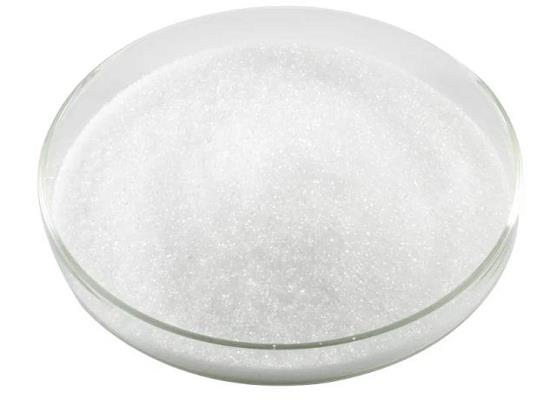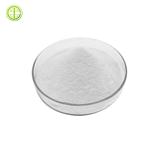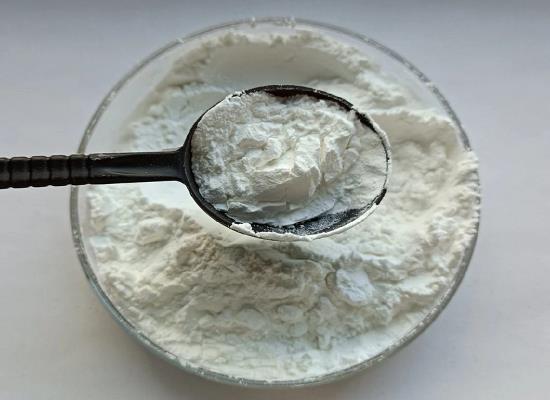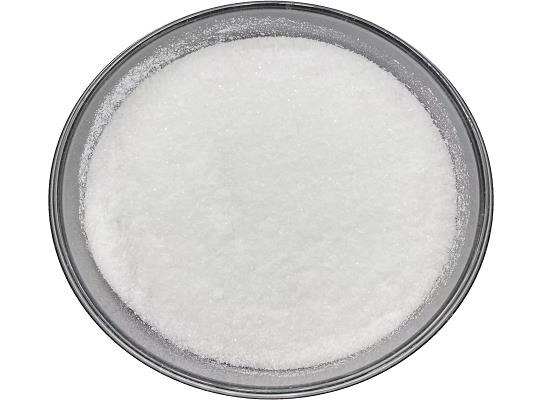L-Glutamic Acid: Anticancer Activity and Applications as Conjugates with Anticancer Drug
Jun 13,2024
General Description
L-Glutamic acid and its derivatives exhibit potent anticancer activity by disrupting glutamine metabolism in cancer cells, inhibiting tumor growth, and inducing cell death. Targeting glutamine-dependent pathways, such as inhibiting glutamine transporters and reprogramming mitochondria, shows promise in novel anticancer therapies. Additionally, conjugating L-Glutamic acid with anticancer drugs enhances their efficacy, solubility, and targeted delivery, reducing toxicity to normal cells. Examples include conjugates with ATRA, paclitaxel, and cisplatin, which have demonstrated improved antitumor activity. This approach harnesses the unique properties of L-Glutamic acid to develop innovative and effective cancer treatments.

Figure 1. L-Glutamic acid
Anticancer Activity
L-Glutamic acid, a crucial amino acid in the body, plays a significant role in anticancer activity through various mechanisms. One of the key pathways involves the conversion of l-glutamic acid into l-glutamine, which is essential for the biosynthesis of purines and pyrimidines, the building blocks of DNA and RNA. Neoplastic cells, unable to synthesize l-glutamine efficiently, become reliant on external sources for this amino acid. Disrupting this metabolic process by targeting l-glutamine synthetase can hinder cancer cell growth, making it a potential target for anticancer therapies. Several derivatives and compounds of l-glutamic acid have shown promising anticancer activity. For example, l-Glutamic acid-γ-(4-hydroxyanilide) isolated from mushrooms has been found to inhibit melanoma cell growth. Additionally, azaserine, 6-diaza-5-oxo-l-norleucine, and other derivatives have demonstrated antitumor effects in animal models by targeting l-glutamine metabolism. Compounds like aryl amide derivatives of l-threo-γ-hydroxy glutamic acid and synthetic amides of l-glutamic acid have shown activity against various tumors, including prostate and colon cancer. Moreover, l-Glutamic acid derivatives such as N-(benzenesulfonyl)-l-glutamic acid bis(p-substituted phenylhydrazides) have exhibited anticancer properties against specific cancer types. l-Glutamic acid-γ-monohydroxamate (GAH) has shown cytotoxicity against cancer cells in culture and antitumoral activity in vivo. These compounds target different pathways involved in cancer cell proliferation and survival. Furthermore, modulation of glutamine metabolism in cancer cells can lead to cell death. By inhibiting glutamine transporters like SLC1A5 and targeting proteins involved in glutamine uptake, such as Myc, it is possible to reduce the ability of cancer cells to utilize glutamine for growth and proliferation. Reprogramming mitochondria to be less dependent on glutamine through inhibitors like amino-oxyacetic acid (AOA) can also be an effective strategy in combating cancer. In conclusion, l-Glutamic acid and its derivatives exhibit anticancer activity through their ability to disrupt glutamine metabolism in cancer cells, inhibit tumor growth, and induce cell death. Targeting glutamine-dependent pathways in cancer cells holds promise for the development of novel anticancer therapies. 1
Applications as Conjugates with Anticancer Drug
L-Glutamic acid is a versatile compound that can be used as a conjugate with various anticancer drugs to enhance their efficacy and reduce their toxicity towards normal cells. By forming conjugates with L-Glutamic acid, these drugs gain improved solubility, transportation, bioavailability, and targeted delivery mechanisms, making them more effective in combating cancer. One example of such conjugation is with All-trans retinoic acid (ATRA), an active metabolite of vitamin A used in treating certain types of leukemia and myelodysplastic syndrome. Derivatives of ATRA containing L-Glutamic acid or its sodium salt have been synthesized to enhance their aqueous solubility, resulting in improved effectiveness against tumors. Another notable application is the conjugation of L-Glutamic acid with paclitaxel, forming poly (L-glutamic acid)-paclitaxel (PG-TXL). This conjugate has shown enhanced antitumor activity compared to free paclitaxel, as it continuously releases the drug into cancer cells, maximizing its therapeutic effects. Similarly, combining cisplatin with γ-poly(α, L-glutamic acid) (γ-PGA) to form γ-PGA-CDDP has been shown to inhibit human breast tumor cells effectively while reducing the toxic side effects associated with free cisplatin. This conjugate offers improved pharmacokinetics and enhanced antitumor activity. Furthermore, L-Glutamic acid conjugates with other drugs such as curcumin, 20(s)-camptothecin (CPT), and N-(4-hydroxyphenyl)retinamide (4HPR) have also demonstrated promising results in targeting and treating various cancers. These conjugates leverage the unique properties of L-Glutamic acid to enhance drug stability, solubility, and targeted delivery to cancer cells, ultimately improving their effectiveness in combating cancer. In conclusion, the utilization of L-Glutamic acid as a conjugate with anticancer drugs offers a promising approach to enhancing their therapeutic potential while minimizing adverse effects on normal cells, highlighting the crucial role of L-Glutamic acid in the development of innovative cancer therapies. 1,2
Reference
1. Dutta S, Ray S, Nagarajan K. Glutamic acid as anticancer agent: An overview. Saudi Pharm J. 2013; 21(4): 337-343.
2. Shih IL, Van YT, Shen MH. Biomedical applications of chemically and microbiologically synthesized poly(glutamic acid) and poly(lysine). Mini Rev Med Chem. 2004; 4(2): 179-188.
- Related articles
- Related Qustion
- Glutamate synthesis Jul 25, 2024
The neurotransmitter glutamate can be synthesized from glutamine by the action of phosphate-activated glutaminase.
- Benefits of Glutamic acid Nov 15, 2019
L-glutamic acid, also known as glutamic acid, is one of the many components of proteins. Like its fellow amino acid glutamate, it is produced naturally by the body; however, it is a different type of amino acid.
Dapoxetine effectively treats premature ejaculation with rapid absorption, short half-life, and minimal neurotransmitter impact, offering swift action and patient satisfaction.....
Jun 13,2024APIMetronidazole targets anaerobic organisms by reducing its nitro group, forming toxic radicals that disrupt DNA and inhibit nucleic acid synthesis, effectively treating various microbial infections.....
Jun 13,2024APIL-Glutamic acid
56-86-0You may like
- Effect of Kinetin on Plant Growth
Sep 27, 2024
- Enrofloxacin: Mechanism of Action and Pharmacokinetics
Sep 27, 2024
- Poly(hexamethylenebiguanide)hydroch....
Sep 26, 2024
- L-Glutamic Acid
-

- $15.00 / 1kg
- 2024-09-28
- CAS:56-86-0
- Min. Order: 1kg
- Purity: ≥98%
- Supply Ability: 3000tons/month
- Glutamic Acid
-

- $0.00 / 1Kg/Bag
- 2024-09-27
- CAS:56-86-0
- Min. Order: 1Kg/Bag
- Purity: 0.99
- Supply Ability: 20 tons
- L-Glutamic adid
-

- $125.00 / 1kg
- 2024-09-27
- CAS:56-86-0
- Min. Order: 1kg
- Purity: 0.99
- Supply Ability: 25kg






